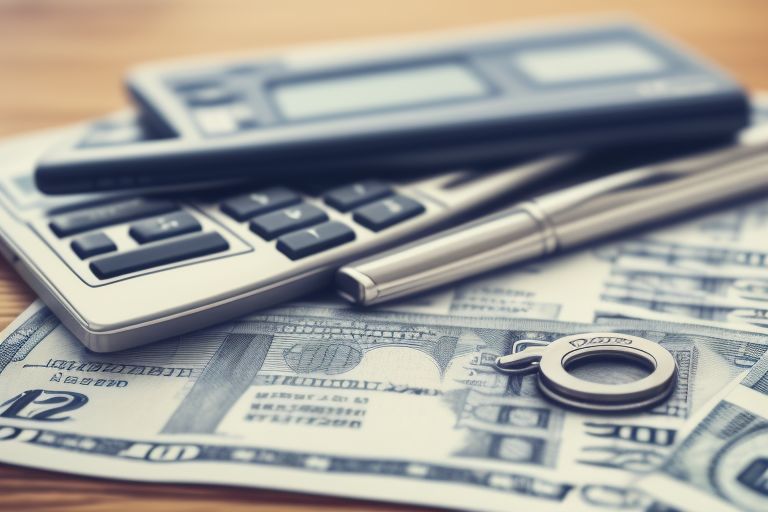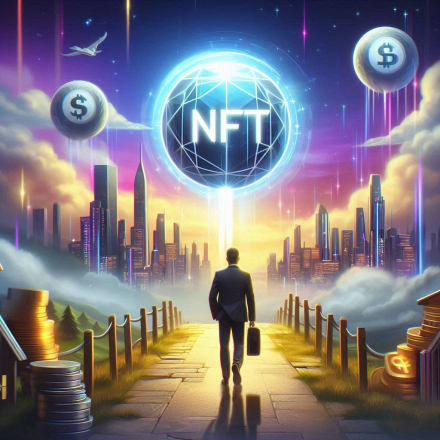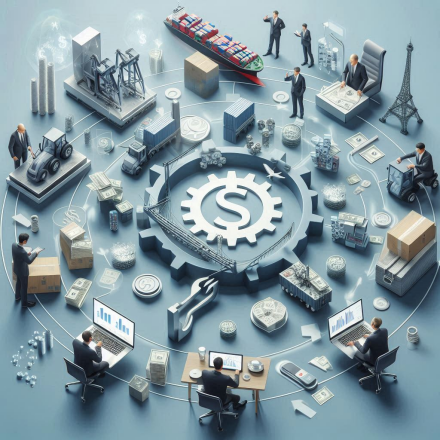The blockchain markets increasingly rely on the combination of predictive analytics and autonomous trading. Algorithmic based trading has been around in the world of traditional finance for a long time but blockchain brings along an entirely new picture with all the varied complexities and opportunities. They include decentralized exchanges, volatile assets and 24/7 market operations. It is for such challenges that predictive analytics and autonomous trading are created to help traders maximize profits and manage risks effectively in such fast-paced marketplaces as that of cryptocurrency.
This article will explore the development of blockchain markets using predictive analytics and autonomous trading by digging into financial metrics in support of these technologies.

What does Predictive Analytics in Blockchain Markets Mean?
Predictive analytics is the use of data, statistical algorithms and machine learning to predict future events based on historical data. With blockchain markets, predictive analytics uses past cryptocurrency prices, trading volumes, among other variables to predict market trends.
Since cryptocurrencies are quite volatile, where the asset's value might surge or plummet by 10% in a matter of hours, forecasting and accurate predictions will be of utmost importance. AI and ML-powered tools sort through humongous information coming from exchanges, social media sentiments, and even macroeconomic indicators. From that type of analysis, traders make wise judgments and do not go by gut feelings or even hand analysis.
Previous studies already present something on predictive analytics, which found it to improve trading success from as direct as 40% in the old traditional markets. In blockchain, it can go much higher because of real-time data. The Morpheus Network uncovered that AI-driven predictive analytics boosted the accuracy of crypto market predictions to around 50% higher than those using manual ones.
How Does Autonomous Trading Work?
The trading is executed using algorithms of computers without any human intervention in this process. In the blockchain market, autonomous trading systems monitor the market data, executing buy and sell orders and adjusting positions based on predefined rules or real-time data insights.
One very significant benefit of blockchain autonomous trading is that it can act much faster than human traders when changes in markets occur. Cryptocurrency markets never close, so human trading can be both exhausting and relatively slow. Trading bots react in real time to these fluctuations so that no opportunity will slide away to make a profit or to avoid a loss.
Typically, autonomous trading systems perform very well in comparison to manual trading if accompanied by predictive analytics. Automated trading systems fared 60% better than human traders during periods of significant volatility. Some high-end crypto trading bots have delivered annual returns above 150%, which is unmatched by average market returns.

Prediction Analytics and Autonomous Trading Convergence
Nonetheless, the actual strength lies in the combination of these two technologies. Predictive analytics allows for the discovery of market trends before they occur; however, it is only autonomous trading that acts upon this knowledge without human intervention. This results in the development of an unbroken system where settlements are exchanged using forecasts based on data analysis.
For example, with a predictive analytics tool you will find that the price of Bitcoin is rising more significantly than in previous price action, social sentiment on the internet and inside on-chain data including wallet activity. The self-trading bot would be able to automatically place a buy order at the best time based on all this analysis. If a dip was chosen by the predictive model, the bot could sell the asset quickly right before prices dropped, hence locking in profit.
Practical Applications of Predictive Analytics and Autonomous Trading
- Risk Management: One of the most popular use cases for predictive analytics and autonomous trading is risk management. In volatile markets like crypto, traders need to be able to shift gears quickly. Predictive models can identify patterns that signal a market correction or a price spike, allowing autonomous trading systems to place protective stops or exit positions before significant losses occur.
The Three Arrows Capital hedge fund apparently used AI-driven predictive analytics and autonomous trading back in 2021 for mitigating risks through major corrections in the market. Using stop-loss algorithms determined through the analysis of market sentiment, the fund was reportedly able to slash millions of investor capitals lost in a 30% market crash.
- Opportunities for Arbitrage: Arbitrage literally means taking advantage of the differences in price disparities between different markets. With so many cryptocurrencies being exchanged in different exchanges across the globe, then there exists a great disparity in the prices of the same. Autonomous trading bots fueled by predictive analytics can easily discern arbitrage opportunities and settle trades much faster than manual traders.
As Kaiko describes it, a crypto friction arbitrage trader armed with access to self-sustaining systems that can deploy predictive analytics can bank between 0.1% and 0.5% a day in crystal-clear profit, which is not annualized; instead, returns easily attain 40% or more. Most importantly, speed itself-the autonomous bots complete trades within milliseconds before the differences in prices disappear.
- Portfolio Optimization: Predictive analytics can be used not only for short-term price change prediction but also as an optimization technique to gain better returns in the long run. Analyzing historical data about the markets with AI models can make predictions based on economic indicators and sentiment of leading business magazines and other leading business media houses. The autonomous trading systems can then execute trades to modify the portfolio according to these predictions.
The AI hedge fund - Numerai relies on predictive analytics models in determining optimal investment strategies across different blockchain assets. The company has been successful in achieving consistent positive returns through autonomous systems that automatically execute trades and rebalance portfolios, even during periods of high market volatility.

How Predictive Analytics and Autonomous Trading Boost Efficiency?
While these technologies bring a massive impact to the blockchain markets, it is their measurable impact that matters. Here are some key performance metrics:
- Trading Speed: Autonomous trading bots execute trades in milliseconds, which is dramatically faster than any human trader could succeed on a minute-scale basis to deduce conclusions.
- Market Insights: Predictive analytics tools increase the accuracy of forecasts by 40-50%, giving the trader more of a reliable strategy than unconscious manipulation.
- Improvement in Profit Margins: On average, predictive analytics boost the profit margins of trading bots by 30% to 60% in volatile markets.
- Decreased Downtime: Automated systems have zero downtime. The bot can be used for continuous trading 24/7, which takes into account all the opportunities in the market along different time zones.
Risk and Challenges of Autonomous Trading in Blockchain
However, even though it possesses all these benefits, autonomous trading also brings risks. For example, even with its potential, market manipulation, flash crashes, and system failures are still liable to cause heavy loss. There are also the predictive analytics models that rely so heavily on historical data, which doesn't always quite work as a precognitive tool in forecasting subsequent trends, something much more difficult when predicting cryptocurrency trends.
As was shown in May 2021, during the general market crash in the USA, some even the best autonomous trading bots were not able to respond in a timely fashion to rapidly declining prices, they encountered significant losses. Highly aggressive trading strategies without proper risk management controls during volatile times can result in some serious financial setbacks.
Future of Predictive Analytics and Autonomous Trading
Predictive analytics and self-trading technology become front-line tools to understand the evolution of blockchain markets. Data-driven inputs married with real-time execution give traders the ability to capitalize on opportunities and also mitigate risks in ways that merely manual trading cannot compete with.
Such advancements can only be expected to establish even more profound reforms in how blockchain assets are traded. For traders seeking to get ahead of their associated crypto market traders, predictive analytics and autonomous trading systems shall likely become a necessity, rather than an option.





